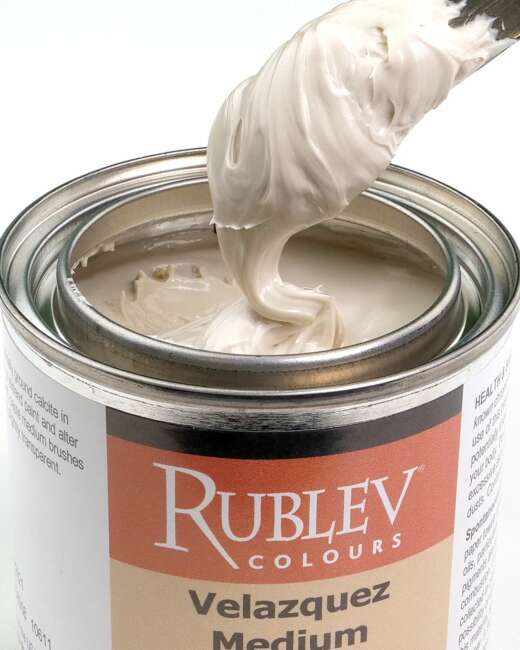
The palette of Velázquez was smaller than the range of colors available to artists of his period. However, it was typical of artists of the seventeenth century, the palette described by Roger de Piles in his famous treatise on painting of 1684.

Las Meninas (detail), Diego Velázquez, 1656, oil on canvas, 318 × 276 cm (125.2 × 108.7 in), Museo del Prado, Madrid
According to authors Jonathan Brown and Carmen Garrido (Brown, 1998), Velázquez used these colors throughout most of his career:
White
• Lead white
• Calcite (natural chalk or ground calcium carbonate)
Yellow
• Yellow iron oxide (natural yellow ocher or goethite)
• Lead-tin yellow
• Naples yellow (sparingly)
Orange
• Orange iron oxide (undoubtedly a natural orange ocher)
Red
• Red iron oxide (natural red ocher or hematite)
• Vermilion
• Organic red lake (such as carmine or madder lake)
Blue
• Azurite
• Lapis lazuli (natural ultramarine)
• Smalt
Brown
• Brown iron oxide (natural brown ocher)
• Manganese oxide (umber)
Black
• Organic black of animal or vegetal origin (bone or wood charcoal)
Green
• Mixture of azurite, yellow iron oxide, and lead-tin yellow
Purple
• Mixture of organic red lake and azurite
Velázquez included calcite and smalt in his paint, not only to alter the colors but also for specific technical purposes. Smalt was used as a drying agent. Calcite increases the transparency of the colors and alters the consistency of the paint, especially when making it more fluid. The addition of calcite also reduces the quantity of lead white needed in mixtures.
References
Brown, Jonathan and Garrido, Carmen (1998). Velázquez The Technique of Genius. New Haven and London: Yale University. p. 17.













